#Mandarin rat snake
Note
yooo mr mark what kind of snake is that?

This is Limoncello (Lemon for short), my Euprepiophis mandarinus (Mandarin rat snake). She is now uhh… quite a bit too big to do this anymore.
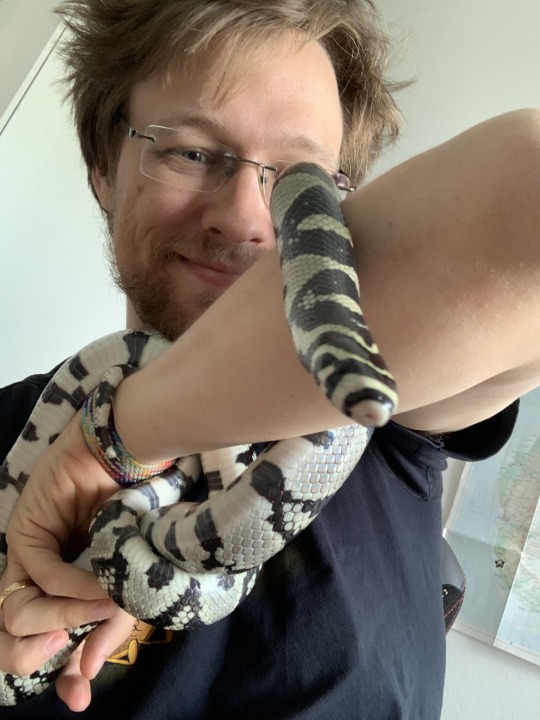
#Euprepiophis#Euprepiophis mandarinus#snake#Mandarin rat snake#selfie#my face#that thing on the front of my skull#gpoyt#answers by Mark#albertas-worst-nightmare#Lemon#Limoncello
421 notes
·
View notes
Text
Mandarin vs Bamboo Rat Snake
Putting the question out to herpblr. We will most likely be getting one of these snakes in the spring, specifically either an o. p. coxi or one of the smaller localities of mandarin. It will be a display snake in a bioactive viv, so handleability isn't much of a concern.
For those with experience with one or both,
Is one a better eater?
Is one more likely to be out and about in the tank?
Is one more prone to escape attempts?
Is one more prone to burrowing?
Any other nuances when comparing the two?
#mandarin rat snake#bamboo rat snake#old world rat snakes#rat snake#herpblr#snakes#snakeblr#reptiblr
4 notes
·
View notes
Text
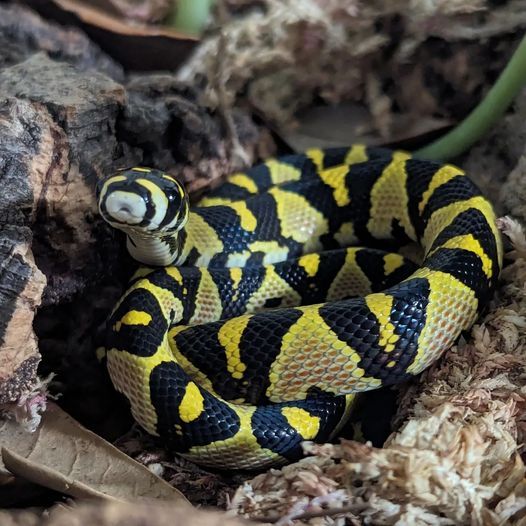
Mandarin Rat Snake (Euprepiophis mandarinus), family Colubridae, found in East Asia
photograph by Gage Smith
309 notes
·
View notes
Text
I would like to offer this resource for therians, an extensive list of all of Sir David Attenborough’s nature documentaries that are available on soap2day, and a full list of what species* they each (notably, prominently) feature the natural behaviors of, separated by episode, and omitting species that were only shown dead, juvenile or being predated on. This took me a while (I have been working on it since Prehistoric Planet’s release) because I did in fact have to watch every single series in full in order to list all the species and the episodes are around 50 minutes long, but enjoy.
Long post ahead:
Most of these shows have closed captioning, which is why I’ve picked soap2day. Planet Earth is the only one that doesn’t. I did not include Dynasties and Dynasties II because each episode only features one species.
Thank you to Birch (@ambiguousmutt) for his help (he watched about half of the episodes) so I didn’t have to do it individually. Credit goes to him as well.
*Sometimes Attenborough doesn’t say the specific species and I was too busy trying to get through the episodes to identify it. In those cases I just put the most specific name I could.
Planet Earth
Episode one (From Pole to Pole): emperor penguin, polar bear, caribou, arctic grey wolf, Amur leopard, six-plumed bird-of-paradise, superb bird-of-paradise, great white shark, African elephant, African buffalo, lechwe, baboon, African wild dog
Episode two (Mountains): gelada, walia ibex, Ethiopian wolf, guanaco, cougar, grizzly bear, markhor, snow leopard, golden eagle, grey wolf, panda, golden snub-nosed monkey, red panda, demoiselle crane
Episode three (Fresh Water): giant salamander, grizzly bear, smooth-coated otter, Nile crocodile, dolphin fish, midge, Amazon river dolphin, dorado, piranha, spectacled caiman, crab-eating macaque, snow goose
Episode four (Caves): wrinkle-lipped free-tailed bat, cockroach, bat hawk, cave swiftlet, yellow-red rat snake, Texas blind salamander
Episode five (Deserts): Bactrian camel, dromedary camel, red kangaroo, fennec fox, guanaco, long-nosed bat, Nubian ibex, flat lizard, lion, African elephant, locust
Episode six (Ice Worlds): snow petrel, Antarctic petrel, south polar skua, humpback whale, emperor penguin, eider, muskox, arctic grey wolf, polar bear, little auk, arctic fox
Episode seven (Great Plains): Mongolian gazelle, red-billed quelea, wildebeest, snow goose, arctic fox, arctic grey wolf, bison, wild ass, Tibetan fox, pygmy hog, African elephant, lion, baboon
Episode eight (Jungles): magnificent bird-of-paradise, spider monkey, howler monkey, siamang gibbon, gliding tree frog, colugo, red crab spider, African elephant, chimpanzee
Episode nine (The Shallow Seas): humpback whale, multiple corals, banded sea krait, trevally, dugong, bottlenose dolphin, Socotra cormorant, salp, comb jelly, sea lion, dusky dolphin, sea urchin, sunflower starfish, short-tailed stingray, great white shark, king penguin, fur seal
Episode ten (Seasonal Forests): Eurasian lynx, moose, crossbill, wolverine, western capercaillie, pine marten, great grey owl, pudu, kodkod, mandarin duck, cicada, red deer, Amur leopard, tiger, mouse lemur
Episode eleven (Ocean Deep): whale shark, oceanic whitetip shark, common dolphin, Cory's shearwater, manta ray, sea spider, vampire squid, spider crab, unnamed deep sea eel, giant isopod, chambered nautilus, Pacific spotted dolphin, mola mola, frigatebird, sailfish, blue whale
Planet Earth II
Episode one (Islands): pygmy three-toed sloth, Komodo dragon, sifaka, marine iguana, Galapagos racer, Buller's albatross, fairy tern, Christmas Island red crab, yellow crazy ant, chinstrap penguin
Episode two (Mountains): Nubian ibex, red fox, golden eagle, grizzly bear, bobcat, flamingo, mountain viscacha rat, snow leopard
Episode three (Jungles): spider monkey, flying lizard, sword-billed hummingbird, river dolphin, jaguar, glass frog, paper wasp, click beetle, red bird of paradise, Wilson's bird of paradise, indri
Episode four (Deserts): lion, Harris's hawk, shrike, locust, sand grouse, pale chanting goshawk, feral mustang, golden mole, desert long-eared bat, darkling beetle, Namaqua chameleon
Episode five (Grasslands): saiga antelope, lion, harvest mouse, carmine bee-eater, Kori bustard, African elephant, serval, Jackson's widowbird, grasscutter ant, compass termite, giant anteater, bison, red fox, arctic grey wolf
Episode six (Cities): langur, peregrine falcon, leopard, European starling, great bowerbird, raccoon, rhesus macaque, spotted hyena, wels catfish
Our Planet
Episode one (One Planet): lesser flamingo, orchid bee, golden-collared manakin, red-capped manakin, blue manakin, cormorant, booby, common dolphin, shearwater, African wild dog, timber wolf
Episode two (Frozen Worlds): gentoo penguin, wandering albatross, narwhal, Pacific walrus, humpback whale, orca, leopard seal, polar bear
Episode three (Jungles): lowland gorilla, forest elephant, black sicklebill, twelve-wired bird-of-paradise, western parotia, mountain treeshrew, Philippine eagle, black spider monkey, leafcutter ant, Sumatra orangutan, velvet worm
Episode four (Coastal Seas): northern fur seal, compass jellyfish, giant trevally, mobula ray, Atlantic stingray, bottlenose dolphin, grey reef shark, whitetip reef shark, sea otter, California sheephead wrasse, Steller's sea lion, bald eagle, humpback whale, Guanay cormorant, Inca tern, Peruvian booby, South American sea lion
Episode five (From Deserts to Grasslands): Socotran cormorant, Arabian leopard, Arabian oryx, African elephant, cheetah, bison, Alcon blue butterfly, saiga, Przewalski's wild horse, tiger
Episode six (The High Seas): blue whale, spinner dolphin, mobula ray, oarfish, anglerfish, bristle worm, giant petrel, black-browed albatross, wandering albatross, bluefin tuna, sea lion, humpback whale
Episode seven (Fresh Water): Australian pelican, torrent duck, grizzly bear, manatee, giant mayfly, common kingfisher, osprey, jaguar, callipterus cichlid, Siamese fighting fish, hippopotamus, lion, African elephant, sandhill crane
Episode eight (Forests): Siberian tiger, bald eagle, rough-skinned newt, great hornbill, African elephant, African wild dog, fossa, gray mouse lemur
A Perfect Planet
Episode one (Volcano): lesser flamingo, marabou stork, Galápagos land iguana, vampire ground finch, Aldabra giant tortoise, North American river otter, coyote, Kamchatka brown bear, wildebeest
Episode two (The Sun): yellow-cheeked gibbon, fig wasp, arctic grey wolf, wood frog, garter snake, arctic fox, Saharan silver ant, golden snub-nosed monkey, sooty shearwater, humpback whales
Episode three (Weather): straw-colored fruit bat, fire ant, Amazonian giant river turtle, desert rain frog, Bactrian camel, Christmas Island red crab, carmine bee-eater, Nile crocodile, African fish eagle, hippopotamus
Episode four (Oceans): common dolphin, marine iguana, flightless cormorant, flamboyant cuttlefish, eider, bottlenose dolphin, lemon shark, manta ray, blacktip reef shark, trevally, rockhopper pengin, Eden's whale
Episode five (Humans): none
Life
Episode one (Challenges of Life): bottlenose dolphins, cheetah, panther chameleon, orca, brown-tufted capuchin, stalk-eyed fly, hippopotamus, Clark's grebe, giant Pacific octopus, strawberry poison-dart frog, leopard seal, orangutan
Episode two (Reptiles and Amphibians): pebble toad, caiman, basilisk, Brazilian pygmy gecko, panther chameleon, Namaqua chameleon, red-sided garter snake, collared iguana, hog-nosed snake, horned lizard, sea krait, African bullfrog, Komodo dragon
Episode three (Mammals): Weddell seal, elephant shrew, aye-aye, caribou, straw-colored fruit bat, lion, spotted hyena, polar bear, brown-nosed coati, meerkat, African elephant, humpback whale
Episode four (Fish): sailfish, flying fish, weedy sea dragon, convict fish, sarcastic fringehead, mudskipper, Hawaiian freshwater goby, hippopotamus, barbel, silvertip shark, clownfish, sea lion, ragged tooth shark, multiple snapper, whale shark
Episode five (Birds): spatuletail hummingbird, lammergeier, red-billed tropicbird, magnificent frigatebird, red knot, horseshoe crab, lesser flamingo, chinstrap penguin, great white pelican, Clark’s grebe, sage grouse, Vogelkop bowerbird
Episode six (Insects): Darwin’s beetle, unnamed damselfly, monarch butterfly, alkali fly, Wilson’s phalarope, oogpister beetle, mongoose, bombardier beetle, honey bee, black bear, Japanese red bug, Dawson’s bee, grass cutter ant
Episode seven (Hunters and Hunted): ibex, short-tailed stoat, brown bear, Ethiopian wolf, California ground squirrel, star-nosed mole, cheetah, red fox, greater bulldog bat, bottlenose dolphin, Bengal tiger, rattlesnake, orca
Episode eight (Creatures of the Deep): Pompeii worm, Humboldt squid, nemertean worm, moon jelly, fried egg jellyfish, spider crab, stingray, cuttlefish, giant Pacific octopus, sunflower sea star, king crab, cleaner shrimp
Episode nine (Plants): monarch butterfly, purple-throated carib hummingbird
Episode ten (Primates): Hamadryas baboon, Japanese macaque, lowland gorilla, spectral tarsier, phayre's leaf monkey, ring-tailed lemur, Sumatra orangutan, chacma baboon, white-faced capuchin, brown-tufted capuchin, western chimpanzee
Blue Planet II
Episode one (One Ocean): bottlenose dolphin, tuskfish, tern, giant trevally, mobula ray, false killer whale, Asian sheepshead wrasse, orca, humpback whale, walrus
Episode two (The Deep): sea toad, Venus’ flower basket, unnamed shrimp, ethereal snailfish, cock-eyed squid, pyrosome, barrel-eyed fish, unnamed siphonophore, yeti crab, Humboldt squid, fangtooth fish, sixgill shark, scabbardfish, zombie worm
Episode three (Coral Reefs): broadclub cuttlefish, coral grouper, day octopus, multiple corals, green turtle, bottlenose dolphin, manta ray, bobbit worm, saddleback clownfish, marbled grouper, grey reef shark
Episode four (Big Blue): spinner dolphin, yellowfin tuna, mobula ray, sailfish, sperm whale, sea turtle, blue shark, great white shark, multiple jellyfish, Portuguese man o' war, whale shark, wandering albatross, shortfin pilot whale
Episode five (Green Seas): Garibaldi, Australian giant cuttlefish, weedy seadragon, common octopus, pyjama shark, sea otter, tiger shark, smooth stingray, zebra mantis shrimp, common dolphin, humpback whale
Episode six (Coasts): Pacific leaping blenny, king penguin, southern elephant seal, Sally Lightfoot crab, Galápagos sea lion, ochre starfish, clingfish, chain moray eel, Atlantic puffin, arctic skua
Episode seven (Our Blue Planet): none
Prehistoric Planet
Episode one (Coasts): Tyrannosaurus rex, Tethydraco, Phosphatodraco, Tuarangisaurus, Mosasaurus hoffmannii, pycnodont fish, ammonites, Kaikaifilu
Episode two (Deserts): Dreadnoughtus, Tarbosaurus, Velociraptor, Mononykus, Barbaridactylus, Secernosaurus
Episode three (Freshwater): Velociraptor, Tyrannosaurus rex, Deinocheirus, Quetzalcoatlus, Masiakasaurus, Beelzebufo, elasmosaur
Episode four (Ice Worlds): dromaeosaur, hadrosaur, Ornithomimus, Olorotitan, troodontid, Antarctopelta, Pachyrhinosaurus, Nanuqsaurus
Episode five (Forests): Austroposeidon, Triceratops, Carnotaurus, Qianzhousaurus, Edmontosaurus, Atrociraptor, Anodontosaurus, Therizinosaurus, Telmatosaurus, Hatzegopteryx
The Hunt
Episode one (The Hardest Challenge): African leopard, African wild dog, Parson’s chameleon, nose-horned chameleon, African mantis, Darwin’s bark spider, Nile crocodile, Amur falcon, orca, cheetah
Episode two (Arctic): polar bear, arctic grey wolf, arctic fox, glaucous gull
Episode three (Forests): tiger, American marten, sparrow hawk, Portia spider, tarsier, harpy eagle, chimpanzee, army ant
Episode four (Oceans): blue whale, frigatebird, dorado, sargassum fish, spinner dolphin, Beroe ovata, Chiroteuthis, lionfish, black-browed albatross, sea lion, tuna, copper shark, common dolphin, Bryde's whale
Episode five (Plains): cheetah, caracal, honey badger, termite, bald eagle, lion, Ethiopian wolf, hotrod ant, spoor spider
Episode six (Coasts): bottlenose dolphin, algae octopus, sand bubbler crab, long-tailed macaque, marine otter, grizzly bear, grey wolf, peregrine falcon, orca, humpback whale
Episode seven (Conservation): none
Life In Colour
Episode one (Seeing In Color): Indian peafowl, mandrill, Costa’s hummingbird, magnificent bird-of-paradise, blue moon butterfly, fiddler crab, mantis shrimp, flamingo, poison dart frog
Episode two (Hiding In Color): Bengal tiger, langur, ptarmigan, crab spider, zebra, Cuban painted snail, blue-striped fangblenny, common waxbill, pin-tailed wydah, Augrabies flat lizard
Frozen Planet II
Episode one (Frozen Worlds): emperor penguin, orca, Pallas’s cat, Siberian tiger, grizzly bear, hooded seal, polar bear
Episode two (Frozen Ocean): polar bear, beluga, harp seal, skeleton shrimp, crested auklet, orca
Episode three (Frozen Peaks): high-casqued chameleon, japanese macaque, kea, andean flamingo, giant panda, golden eagle, andean mountain lion
Episode four (Frozen South): king penguin, Antipodean wandering albatross, blue whale, Weddell seal, chinstrap penguin, snow petrel, leopard seal, orca
Episode five (Frozen Lands): grey wolf, arctic fox, Amur leopard, Siberian tiger, painted turtl, Lapland bumblebee, snowy owl, caribou, grizzly bear
Episode six (Our Frozen Planet): none
Africa
Episode one (Kalahari): fork-tailed drongo, ostrich, black rhinoceros, Angolan giraffe, African leopard, armored ground cricket, spider wasp
Episode two (Savannah): Agama lizard, shoebill, bee-eaters and rollers, lesser flamingo, African elephant, crowned eagle, African fish eagle, martial eagle
Episode three (Congo): chimpanzee, central African rock python, Angola banana frog, African skimmer, rockfowl, African elephant
Episode four (Cape): emperor swallowtail, giant kingfish, African penguin, monkey beetle, springbok, yellow-billed kite, pied crow, ghost crab, vundu catfish, Nile crocodile, Bryde’s whale, great white shark, common dolphin
Episode five (Sahara): Grevy’s zebra, naked mole rat, barn swallow, Dromedary camel, dung beetle, crocodile, western yellow wagtail, Saharan silver ant
Episode six (The Future): none
521 notes
·
View notes
Note
Do mandarin rat snakes make good pets? Handled one today and fell in love
Mandarin ratsnakes can be great pets for experienced keepers.
They're incredible snakes who usually have wonderful temperaments! So calm, docile, and easy to work with. But they don't tolerate high heat well and have high humidity needs, so their husbandry can be a little tricky to get spot-on. They'd be a very challenging first snake but wouldn't make a bad second or third snake as long as you do your research!

102 notes
·
View notes
Text
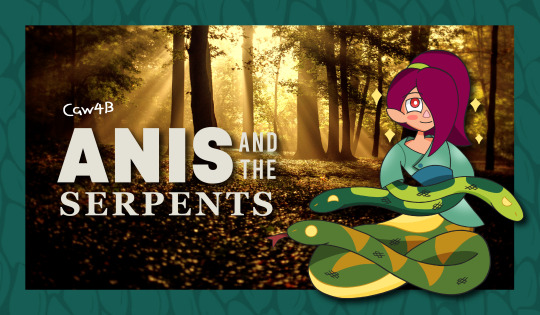
- Caw4B's : ANIS AND THE SERPENTS -
Anis Rusli makes another snakey return with a mild change in her design. Anis Rusli (Pronounced as: A-knee-s Rue's-lee) is a character based on a local Malaysian Legend.
Legends among village folk and fishermen in some parts of the Malaysian Peninsula tell tales of a mysterious phenomenon that they witnessed and survived to tell the tale. A creature that is suggested to be larger than the boats due to the amounts of bubbles it produces from beneath the murky waters.
The Sulur Bidar (Su-lur Bi-da-r) is a Man-eating carpet monster who is said to look like a normal carpet/Tikar (a type of woven mat) with snake heads for tendrils on each corner. In some illustrations, they are described to have a beautiful woman's head as a lure.
If you ever get curious and get too close. The Sulur Bidar will release a foul odor. Described to have a disgustingly old chicken eggs smell. The creature will then unleash its snake heads and drown its victims like a burrito to be consumed.
The legends say, the Sulur Bidar is a type of Jin/demon that likes to disturb/eat mortals. However, modern explorations believe that its a scientific phenomenon called, Oil and Gas. Which releases a lethal gas known as Hydrogen Sulphide.

- Meet ANIS RUSLI -
Anis Rusli is the human torso part of this body. A beautiful and rather young-looking girl who dwells on both the surface but mostly living in the wild by the local rivers. By appearance, she is about twenty-one-years-old or so but her actual age is centuries older.
In public, Anis is elusive. Often attempting to avoid contact. She is seen covering up from face to bottom in layers of clothes to avoid suspicion. However, once you get to know her. Anis is actually a cheery girl who is both kind-hearted and fiercely protective. Her serpent sisters are named as the following;
Tepi The Left - The Dominant and aggressive striker.
Depan The Bottom - The Mobility, muscle and biggest eater.
Belakang The Right - The Assistant and silly little jokester.
As a unit, They function in perfect synchronicity. Anis plans and leads her team. Depan moves defensively as the limb to avoid blind spots. Lastly, Tepi and Belakang strike opponents in turns.

- Anis Fun Facts -
The name; Anis is of Arabic origin. Meaning; genial or close friend.
Anis's voice is described as "sweet and soothing; may put you to sleep."
Anis's hair color is described as; Raspberry. A rather maroon-ish red with hints of purple in the mix.
Anis is a natural Bilingual. She is fluent in, Malay and English. She knows a little bit of Mandarin and Cantonese through Chinese and Hong Kong Dramas.
Anis and her sisters share a secret language. Some would even say its technically Parseltongue but Anis replies in Malay (Which is her native language)
The names of the Serpents is a reference to local icebreaker game known as [Tepi, Depan, Belakang] Translation; Side, Front, Back.
Contrary to her actual species, Anis hates eating humans and considers them as "junk food" She eats normal human food.
Anis's sisters however, eats regular snake food such as rats, bird eggs or other small mammals.
In MTCR, Anis is nicknamed as Guardian of the Emerald Forest and the Serpent Witch of Kingshaven.
Anis is inspired by three core characters; Sucy Manbavaran, Misato Katsuragi and Olivia "Liv" Octavius.


#murder the crow reforged#murder the crow#kingshaven#kingshavenacademy#anis rusli#sulur bidar#anis the sulur bidar#serpents#tepi depan belakang#Malaysia#mythology#cryptid#southeast asia#monsters#sucy manbavaran#misato katsuragi#olivia octavius#little witch academia#neon genesis evangelion#spiderman into the spiderverse
11 notes
·
View notes
Note
Already sent this ask to @/omg-snakes but they weren’t able to find any so I thought I would see if you had any tips:
Any recommendations for blogs about/with info on building/making vivariums for snakes (extra points if it’s bioactive)
Im trying to collect info for when i do eventually make the vivarium for the future corn snake.
(Also i love your blog so much, it’s such a lovely addition to my timeline 💜💜💜💜💜)
Hello!
So I can’t say that I know any on Tumblr, but if you happen to be on Instagram I can’t recommend passionatesnakes enough! She has absolutely beautiful and enriching snake enclosures that she builds from scratch, she does naturalistic but they can very easily be changed to bioactive - she uses live plants but just likes more freedom to move things around without disturbing the roots of plants so it works out well for that!
She has 4 colubrids, all rat snakes (mandarin, mountain, japanese and rhino) and she also has a BCI and a carpet python, but for a corn I think you’ll find a lot of inspiration from her colubrid enclosures 🥰
If anyone who follows has recommendations for tumblrs who showcase good vivarium builds please reply or reblog!
And also thank you friend for enjoying our blog! We’re so glad it can bring joy to others and we love everyone who supports us!
11 notes
·
View notes
Text
TUA Daemons
I was really torn on some of these, ngl, so some have a secondary animal I considered. I'd love to hear any thoughts on different daemons or names for them!
Luther's daemon is a Golden Retriever called Diana:

Diego's daemon is a Poplar Hawk Moth called Carina (also considered a rat, bat, and a few other insects):

Allison's daemon is a Secretary Bird called Nkosana (prince):
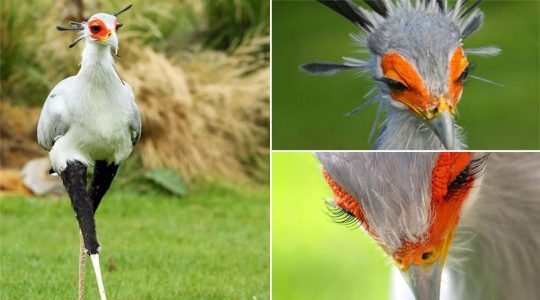
(considered the Blue Crowned Pigeon and Mandarin Chicken, as both are gorgeous, but I love that the Secretary Bird is not only fabulous, but also a deadly bird of prey)

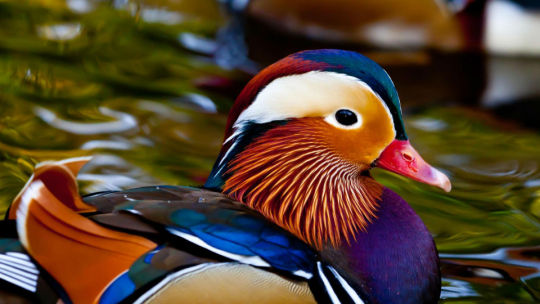
Klaus’ daemon is a snake (formosa odd-scaled snake, rainbow boa, scaleless coral snake, etc) called Sisyphus “Sis” or Nyx or Athanasius (Klaus' daemon is a same-sex daemon, and, having been severed from him the first time Klaus died, can go far distances from him, and has never settled. It still tends to stay in snake form, hanging around his neck. It changes breeds/colours as it suits him):
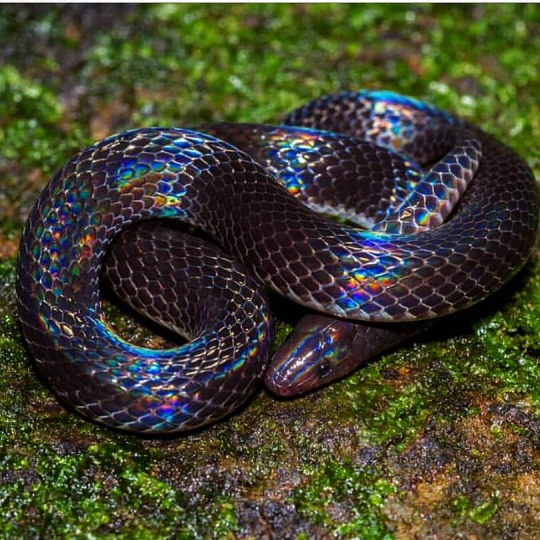






Five’s daemon never settled, as being stuck alone in the apocalypse fucked with the whole reaching emotional maturity. Prior to going into the apocalypse she changed shape constantly, but preferred shapes like crow, octopus, rat, chimpanzee, parrot, etc. Since returning she tends to stay in cat form unless she needs to change for some reason. Something happened to them during their time at the Commission that causes her to either hide away from Five, or change into something small enough to fit in his pockets, like a chinchilla, and be unseen. Five never named her, and said they can call her Five, but his siblings rejected that, and call her Cúig, or Five in their own languages:


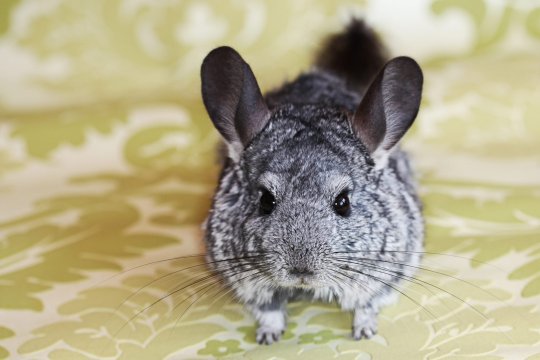
Ben’s daemon tended to prefer to be an owl, tortoise, horse, deer (if settled before death, then tortoise or deer) called Josephine “Jo” (named after his favourite literary character at the time, from Little Women):

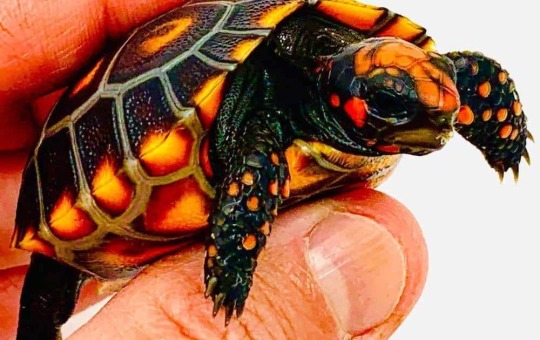
Viktor’s daemon is a hedgehog called Vasilisa (Named after the Russian version of Cinderella. Viktor had a rare--apparently--same sex daemon as well, because Vasilisa is female, though this hinted at the fact that he was trans. The reasons he and Klaus have same sex daemons is somewhat related, but ultimately different):

Please share you thoughts. I'd really love to know how others headcanon it. I'm pretty married to some of these for my fic, but others I'm happy to hear more about.
11 notes
·
View notes
Text
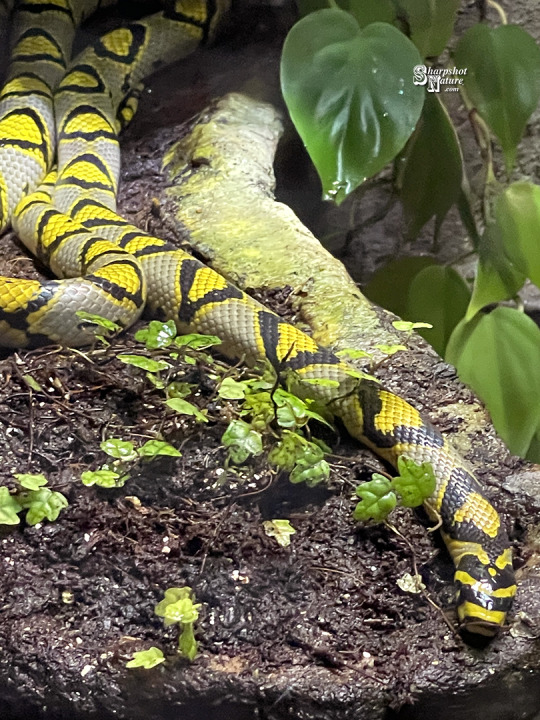
Sharpshot Nature .Com 02491-kathy-052699 Mandarin Rat Snake
Apple iPhone 12 Pro Max - ƒ/2.2 1/40 7.5mm ISO800 - Galveston, TX
Please help spread the content! View the entire gallery - https://sharpshotnature.com
#sharpshotnature#mandarinratsnake#ratsnake#snake#reptile#leaf#rock#winter#nature#naturephotography#wildlife#wildlifephotography#photography
4 notes
·
View notes
Text

Lunar New Year is one of the most important celebrations of the year among East and Southeast Asian cultures including Chinese, Vietnamese, and Korean communities, among others.
The New Year celebration is usually celebrated for multiple days—not just one day as in the Gregorian calendar’s New Year.
In 2023, Lunar New Year begins on January 22.
China’s Lunar New Year is known as the Spring Festival or Chūnjié in Mandarin, while Koreans call it Seollal and Vietnamese refer to it as Tết.
Tied to the lunar calendar, the holiday began as a time for feasting and to honor household and heavenly deities, as well as ancestors.
The New Year typically begins with the first new moon that occurs between the end of January and spans the first 15 days of the first month of the lunar calendar—until the full moon arrives.
Zodiac Animals
Each year in the Lunar calendar is represented by one of 12 zodiac animals included in the cycle of 12 stations or “signs” along the apparent path of the sun through the cosmos.
The 12 zodiac animals are the rat, ox, tiger, rabbit, dragon, snake, horse, sheep, monkey, rooster, dog and pig.
In addition to the animals, five elements of earth, water, fire, wood, and metal are also mapped onto the traditional lunar calendar.
Each year is associated with an animal that corresponds to an element.
The year 2023 is slated to be the year of the rabbit. The year of the rabbit last came up in 2011.
In Vietnam, 2023 is the year of the cat.
(Vietnam and China share 10 of the zodiac calendar’s 12 signs, but the Vietnamese honor the cat instead of the rabbit, and the buffalo instead of the ox.)
Lunar New Year Foods and Traditions
Each culture celebrates the Lunar New Year differently with various foods and traditions that symbolize prosperity, abundance and togetherness.
In preparation for the Lunar New Year, houses are thoroughly cleaned to rid them of inauspicious spirits, which might have collected during the old year.
Cleaning is also meant to open space for good will and good luck.
Some households hold rituals to offer food and paper icons to ancestors. Others post red paper and banners inscribed with calligraphy messages of good health and fortune in front of and inside homes.
Elders give out envelopes containing money to children. Foods made from glutinous rice are commonly eaten, as these foods represent togetherness.
Other foods symbolize prosperity, abundance and good luck.
China
Chinese New Year is thought to date back to the Shang Dynasty in the 14th century B.C.
Under Emperor Wu of Han (140–87 B.C.), the tradition of carrying out rituals on the first day of the Chinese calendar year began.
“This holiday has ancient roots in China as an agricultural society. It was the occasion to celebrate the harvest and worship the gods and ask for good harvests in times to come," explains Yong Chen, a scholar in Asian American Studies.
Beginning in 1949, under the rule of Chinese Communist Party leader Mao Zedong, the government forbade celebration of the traditional Chinese New Year and followed the Gregorian calendar.
However, by the end of the 20th century, Chinese leaders were more willing to accept the tradition.
In 1996, China instituted a weeklong vacation during the holiday—now officially called Spring Festival—giving people the opportunity to travel home and to celebrate the new year.
Did you know?
San Francisco (California) claims its Chinese New Year parade is the biggest celebration of its kind outside of Asia.
The city has hosted a Chinese New Year celebration since the Gold Rush era of the 1860s, a period of large-scale Chinese immigration to the region.
Today, the holiday prompts major travel as hundreds of millions hit the roads or take public transportation to return home to be with family.
Among Chinese cultures, fish is typically included as a last course of a New Year’s Eve meal for good luck.
In the Chinese language, the pronunciation of “fish” is the same as that for the word “surplus” or “abundance.”
Chinese New Year’s meals also feature foods like glutinous rice ball soup, moon-shaped rice cakes (New Year’s cake) and dumplings (Jiǎozi in Mandarin).
Sometimes, a clean coin is tucked inside a dumpling for good luck.
The holiday concludes with the Lantern Festival, which is celebrated on the last day of New Year's festivities. Parades, dances, games, and fireworks mark the finale of the holiday.
Vietnam
In Vietnamese celebrations of the holiday, homes are decorated with kumquat trees and flowers such as peach blossoms, chrysanthemums, orchids, and red gladiolas.
As in China, travel is heavy during the holiday as family members gather to mark the new year.
Families feast on five-fruit platters to honor their ancestors.
Tết celebrations can also include bánh chưng, a rice cake made with mung beans, pork, and other ingredients wrapped in bamboo leaves.
Snacks called mứt tết are commonly offered to guests. These sweet bites are made from dried fruits or roasted seeds mixed with sugar.
Korea
In Korea, official Lunar New Year celebrations were halted from 1910-1945.
This was when the Empire of Japan annexed Korea and ruled it as a colony until the end of World War II.
Celebrations of Seollal were officially revived in 1989, although many families had already begun observing the lunar holiday.
North Korea began celebrating the Lunar New Year according to the lunar calendar in 2003.
Before then, New Year's was officially only observed on January 1. North Koreans are also encouraged to visit statues of founder Kim Il Sung and his son Kim Jong Il during the holidays and provide an offering of flowers.
Among both North and South Koreans, foods like sliced rice cake soup (tteokguk) and a dish made from five different grains are prepared to mark the Lunar New Year holiday.
Rather than giving money in red envelopes, as in China and Vietnam, elders give New Year's money in white and patterned envelopes.
Traditionally, families gather from all over Korea at the house of their oldest male relative to pay their respects to both ancestors and elders.
Travel is less common in North Korea and families tend to mark the holiday at home.
Lunar New Year Greetings
Cultures celebrating Lunar New Year have different ways of greeting each other during the holiday.
In Mandarin, a common way to wish family and close friends a happy New Year is “Xīnnián hǎo,” meaning “New Year Goodness” or “Good New Year.”
Another greeting is “Xīnnián kuàilè,” meaning "Happy New Year."
Traditional greetings during Tết in Vietnam are “Chúc Mừng Năm Mới” (Happy New Year) and “Cung Chúc Tân Xuân” (gracious wishes of the new spring).
For Seollal, South Koreans commonly say "Saehae bok mani badeuseyo” (May you receive lots of luck in the new year), while North Koreans say "Saehaereul chuckhahabnida” (Congratulations on the new year).
#Chinese New Year#Lunar New Year#Chinese New Year 2023#Year of the Rabbit (2023)#Year of the Water Rabbit (2023)#Spring Festival#Chūnjié#Seollal#Tết#Lantern Festival
4 notes
·
View notes
Text
Sharpshot Nature .Com 02491-kathy-052699 Mandarin Rat Snake
Mandarin Rat Snake
2023-03-30 02491-kathy-052699 Mandarin Rat Snake
Apple iPhone 12 Pro Max – ƒ/2.2 1/40 7.5mm ISO800 – Galveston, TX
Source: Sharpshot Nature .Com 02491-kathy-052699 Mandarin Rat Snake

View On WordPress
0 notes
Text
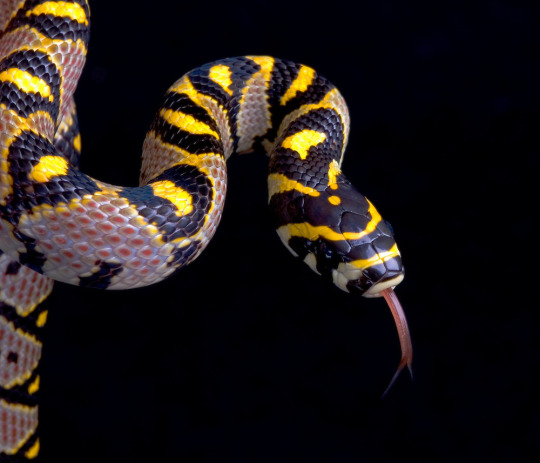
Mandarin Rat Snake (Euprepiophis mandarinus), family Colubridae, found in East Asia
photograph by Michael D. Kern
www.thegardensofeden.org
294 notes
·
View notes
Text
Name: Mr. Myrl O'Boyle
Color: Misty Gray #Bcc2c2
Symbol: prospit
Strife Specibus: throwingstarkind
Handle: tallAcceptance
Animal: porcupine
Pronouns: she/her
Age: 24
Birthday: 160th day of the year
Sexuality: This person hasn't, would, and never would think about sexuality.
Interests: sports memorabilia and machining
Dream Moon: prospit
Classpect: Seer of Rage
Land: Land of Felines and Crystal, a bad place, with frightened Mandarin rat snake consorts. It is a place full of warring factions and twisting mazes. Typheus lurks.
Instrument: schryari
0 notes
Text
Name: Miss Pyrepo Eggmop
Ancestor: The Relative
Strife Specibus: clawkind
Blood Color and Sign: Rust; Argo
Handle: gemmeusConundrum
Lusus: gannet mom
Pronouns: he/him
Age: 12 sweeps
Interests: crystals and driving
Sexuality: fluid
Class: Mage
Land: Land of Hexes and Rivers, a bright place, with annoyed Mandarin rat snake consorts. It is a place full of sunshine and redacted. Abraxas can't wait to meet the player.
Quirk: use |Y| for your capital M's
via roll-a-troll https://ift.tt/cu4Q9mR, do as you please
0 notes
Photo

Mandarin Rat Snake (Euprepiophis mandarinus) at Sedgwick County Zoo #mandarinratsnake #snakes #snakesofinstagram #reptiles #reptilesofinstagram #reptilephotography #herpphotography #zoos #zoosmatter #zoo #zoophotography #zoophoto #sedgwickcountyzoo https://www.instagram.com/p/CoaACTXu6SX/?igshid=NGJjMDIxMWI=
#mandarinratsnake#snakes#snakesofinstagram#reptiles#reptilesofinstagram#reptilephotography#herpphotography#zoos#zoosmatter#zoo#zoophotography#zoophoto#sedgwickcountyzoo
0 notes
Text
Cultural Segment
With your host, Zhongwen-Lingblr.
If the culture of the language you’re learning doesn’t interest you, find a new language. Or get interested quick
In these types of segments, I’ll provide you with basic information, and if your interested, I’ll supply links so you can go more in depth on your own.
Chinese New Year and Zodiac Signs
There are twelve Zodiac signs :
🐷 猪 [zhū] pig
Recent Years: 1995, 2007, 2019
🐭 鼠 [shǔ] Rat
Recent Years: 1996, 2008, 2020
🐂 牛 [niú] Ox
Recent Years: 1997, 2009, 2021
🐯 虎 [hǔ] Tiger
Recent Years: 1998, 2010, 2022
🐰 兔 [tù] Rabbit
Recent Years : 1999, 2011, 2023
🐲 龙 [lóng] Dragon
Recent Years: 2000, 2012, 2024
🐍 蛇 [shé] Snake
Recent Years: 2001, 2013, 2025
🐎 马 [mǎ] Horse
Recent Years: 2002, 2014, 2026
🐑 羊 [yáng] Ram/goat
Recent Years: 2003, 2015, 2027
🐒 猴 [Hóu] Monkey
Recent Years: 2004, 2016, 2028
🐔 鸡 [jī] Rooster
Recent Years: 2005, 2017, 2029
🐶 狗 [gǒu] Dog
Recent Years: 2006, 2018, 2030
* * *
-The current year is (obviously) : Year of the Pig
-Next year (2020) : Year of the Rat
Your zodiac is dependent on the year you are born. But there are many astrological factors that come into play, and can also determine the way a parent names you. Things such as celestial stem, early branches, element, and yin/yang alignment.
Curious about how to ask someone what their zodiac is? Me too
Question : 你属什么? [nǐ shǔ shénme?] what is your chinese Zodiac sign? Or literally, what do you belong to?
Answer : 我属蛇。[wǒ shǔ shé.] I am a snake.
It’s important to note that asking and giving out a zodiac is a VERY personal thing, and says a lot about who you are even if you don’t want it to. People will make judgements based on your zodiac even if they aren’t true.
You may notice that 鼠 (Rat) and 属 (genus) have the same pinyin (shǔ). Ah. Homophones. What fun.
Reminder that two Third tones put together makes one Third tone and more of a shortened half tone. So when saying 我属鼠,it would sound more like shǔ shù
羊 [yáng] often comes out to mean sheep or ram, but actually represents the goat in the zodiac system. If you talked about the goat outside of the zodiac system, like an actual living thing, it would be 山羊 [shānyáng] or literally “mountain sheep”.
If you want to learn more about your own horoscope, check out https://chinesenewyear.net/zodiac/rat/
Help from Chineasy’s inventor, Shaolan Hsueh, https://www.google.as/amp/s/ideas.ted.com/the-surprising-influence-of-the-chinese-zodiac/amp/
https://www.ted.com/talks/shaolan_the_chinese_zodiac_explained/up-next?language=en
This took longer than I thought it would. I’ll try and add more variety next segment. Probably. I’m going to sleep now.
#mandarin#zhongwenlingblr#language#learning#languages#aesthetic#cultural segment#zodiac#chinese new year#year of the pig#year of the rat#12 zodiacs#what fun#homophone practice#whats your zodiac? comment below#im curious#I am a snake
24 notes
·
View notes